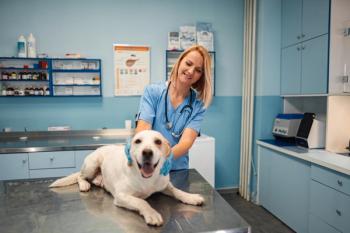
'Good enough' just not good enough anymore
The only way you can stay current in this changing world of veterinary medicine is to change yourself and your attitudes along with the tumultuous external changes affecting your practice today.
The only way you can stay current in this changing world of veterinary medicine is to change yourself and your attitudes along with the tumultuous external changes affecting your practice today.
Seminar maven Bob Levoy said it-what was good enough just isn't goodenough anymore.
What I see happening today is more and more veterinarians selling outto corporations just so they don't have to cope with the new world of veterinarypractice any more. Others grabbed employment with industry, preferring corporatepolitics to the everyday turmoil of solo practice. The vast majority, however,are still at their hospitals, plugging away, refusing to evolve with thetimes and seeing their net profits drop 10-15 percent with each year thatpasses. Too many will find at retirement that their lackawanna to adaptcosts them huge bucks when their practice has a zero valuation for lackof appreciable profit.
When the owner of a solo practice could actually earn more as an associateworking at Elsewhere Animal Hospital, no buyer will pay more than the realestate value for the practice.
On the other hand, veterinarians with good or better business sense,who stop fighting demographics and who really neadahwahnna adapt to theenvironmental changes are experiencing unprecedented growth and prosperity.Just getting by and lowering their goals just is not acceptable to thesedetermined and progressive practitioners.
Barriers to success
When a veterinarian cannot meet his/her own goals there are two causes.First is burnout with loss of the motivation and inspiration needed to succeedor that the motivation and inspiration were never there in the first place.
If lack of motivation is the problem, you must look inward for the passionto change yourself, implementing new concepts and overcoming barriers tosuccess. All the great ideas any consultant can give you are worthless ifyou refuse to implement them.
Yes, I know, implementation is the toughest task in the world. How manytimes have you come back from a meeting all fired up to change something,got caught up in the exigencies of every day practice and rediscovered yourseminar notes under two feet of journals and client records six months later,when your get-up-and-go has got-up-and-went.
Give yourself a test. Just four questions to answer with a yes or no.
Am I happy in practice? Y or N
Do I get excited about helping patients get well? Y or N
Am I always looking for better ways to serve clients? Y or N
Do I look forward to going to the hospital each morning? Y orN
If the answer to any of these questions is no, you have a problem. Don'tcall me. I can only help those who answer the four questions with strongpositives.
If any of these questions is no, then I can almost guarawarrantee thatyou have severe staff turnover problems. Influence and attitudes start atthe top and trickle down.
You need to restore the enthusiasm you may have graduated with, beforeyou can make meaningful changes to improve your practice. You need to talkto a psychologist before you even think about a practice management consultant.
Infrastructure
The second reason a veterinarian may fail to reach his/her goals relatesto their practice infrastructure. Think of your practice as you would thinkof any patient. Cardiovascular or genitourinary problems are just infrastructureproblems. When a portion of your practice infrastructure does not work,the whole practice does not work well. Your practice infrastructure includessystems to acquire new patients, educate existing clients, scheduling andfinancial management systems, diagnostics and therapeutic regimens followedby excellent public relations.
You either have a healthy infrastructure or you do not! If you do nothave the ability to take two weeks off and return to a properly functioningpractice, you have not placed in your practice competent middle managementworking with well trained staff. With all the staff training videos, cd'sand audiotapes available, you need to follow old time comedian Milton Berle'sadvice and "Look ashamed."
If you can't draw a consistent monthly salary, your practice just isnot healthy. The only way to establish a consistent salary with programmedannual increases is to expand your practice beyond its "break-even"point to where a slow week or a depressed busy season will not leave youundercapitalized.
Unfortunately, the vast majority of veterinarians are not efficient managers.No one should be surprised at this observation. Very few combined DVM-MBAdegrees or even VMD-MBA degrees have been awarded.
Yes, there are ways to improve any practice; most to the tune of 20-30percent increase in gross revenues which equates to a doubling of net revenuesin most practices. Every dollar past the break-even point is about 80 percentprofit.
Next month I'll share some of the ways of doing this, as I have beenfor the last 21 years. Keep readin'!
Dr. Snyder, a well-known consultant, publishes the Snyder AdvisoryLetter, a newsletter for practice productivity and is available for in-practiceconsultation. He can be reached at 17094-1 Boca Club Blvd., Boca Raton,FL 33487-1225; (800) 292-7995; vethelp@gate.net; FAX (561) 989-8558.
Newsletter
From exam room tips to practice management insights, get trusted veterinary news delivered straight to your inbox—subscribe to dvm360.






